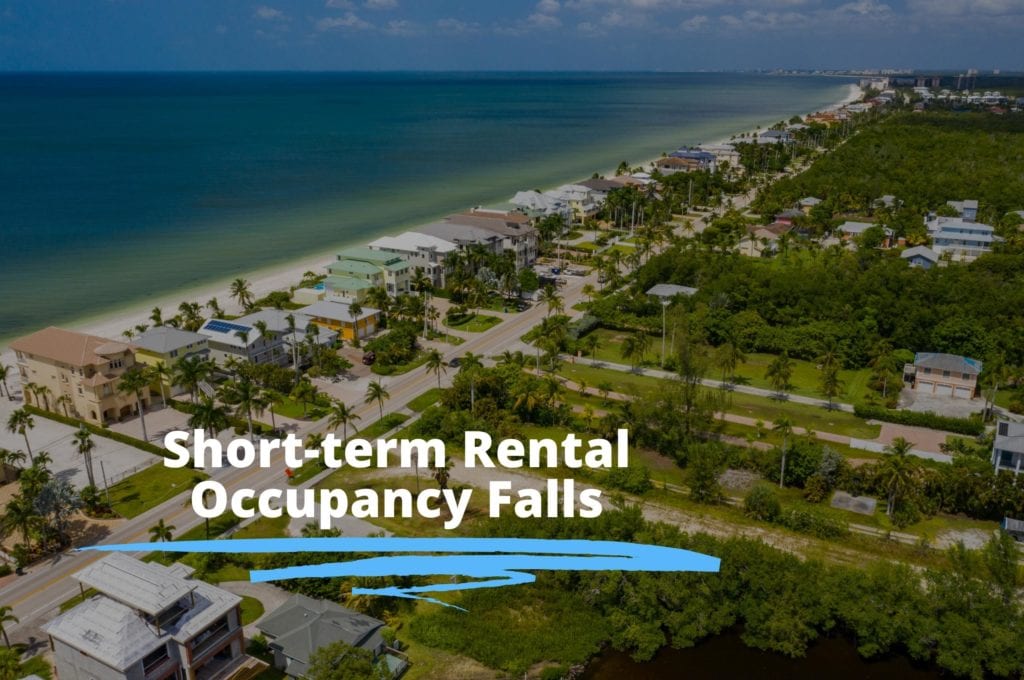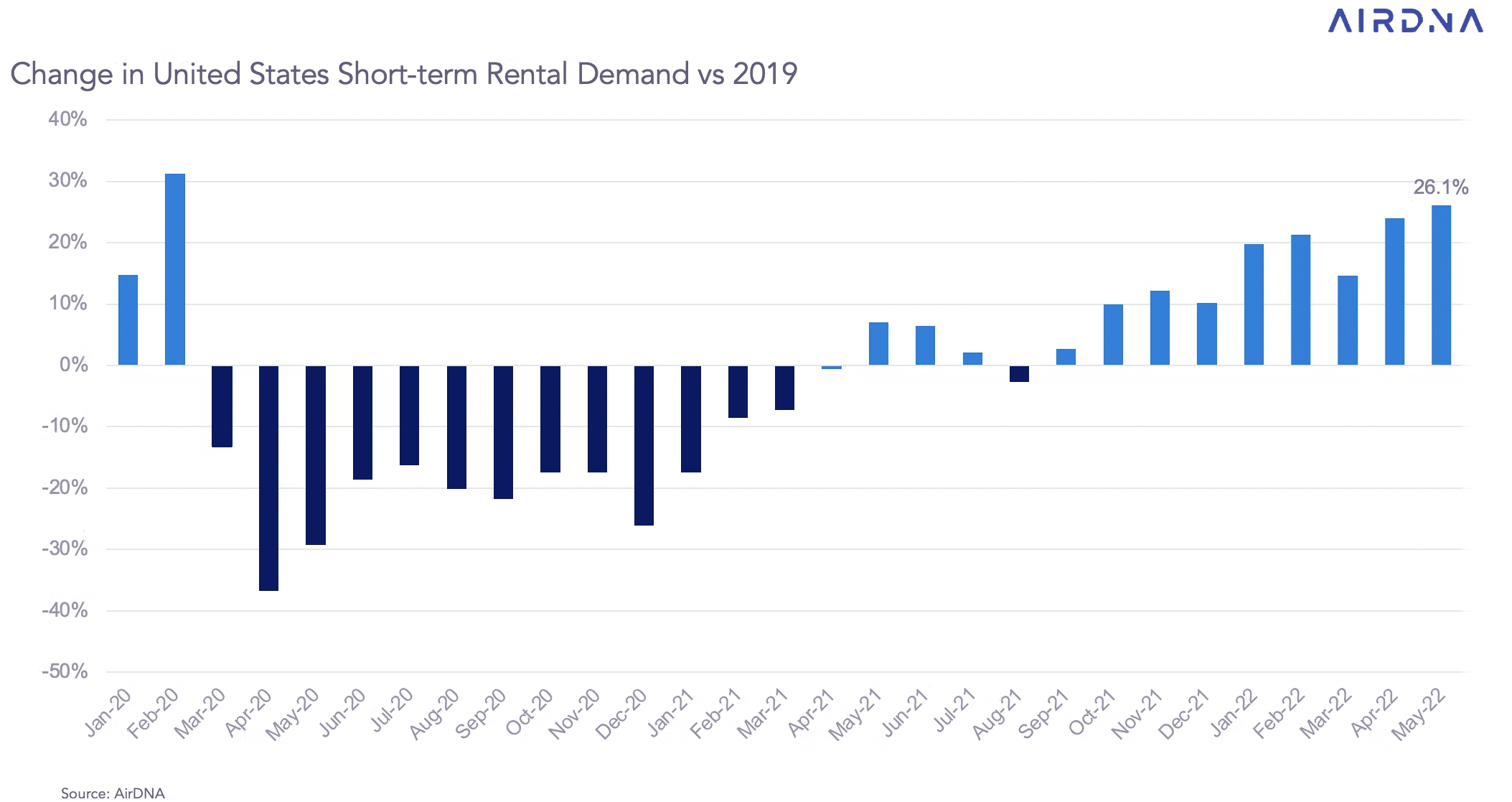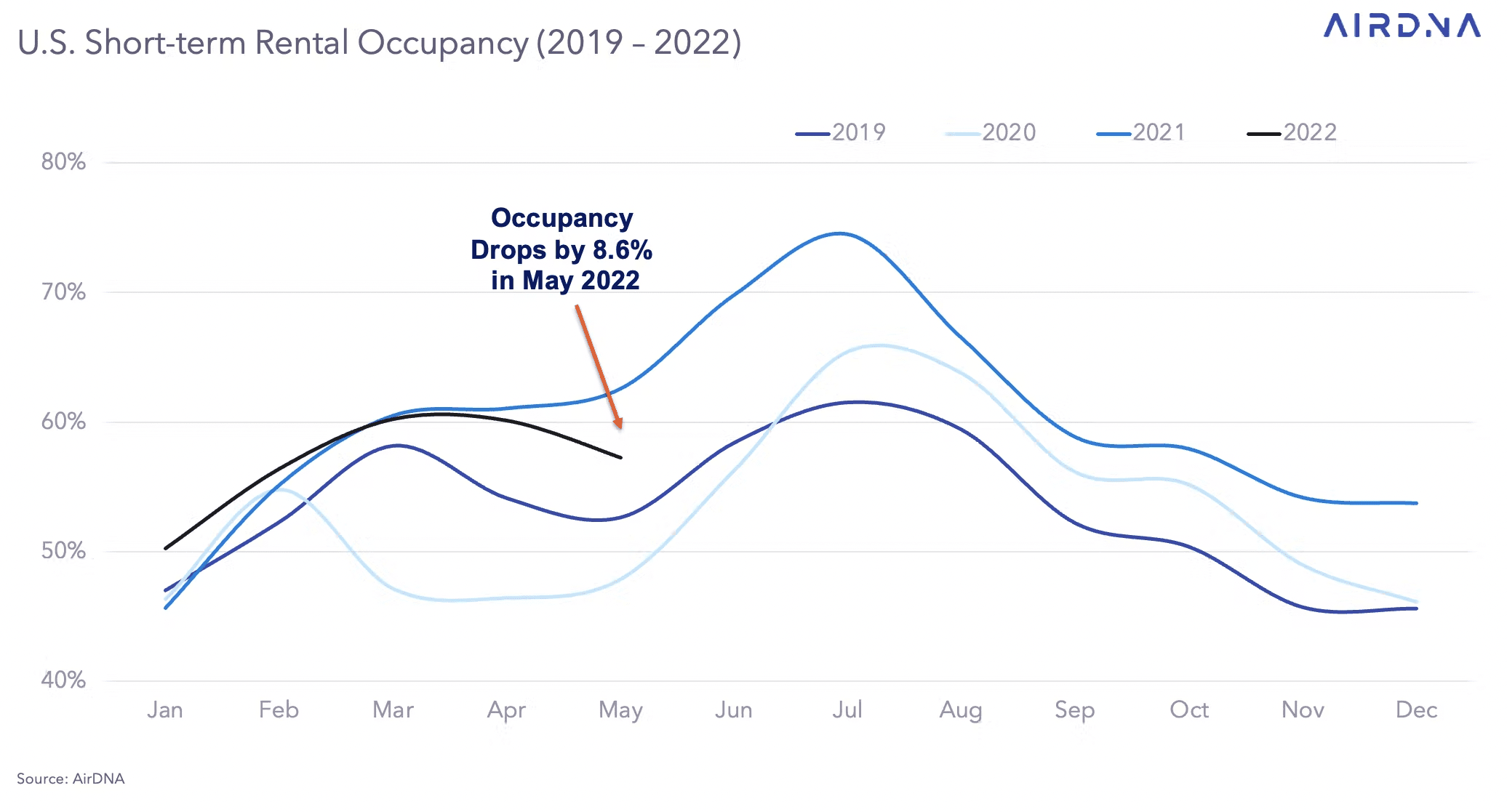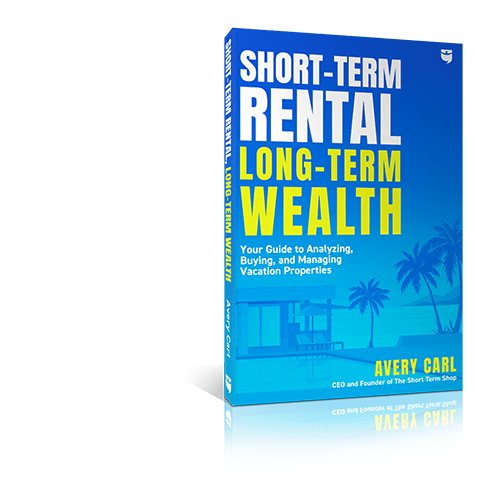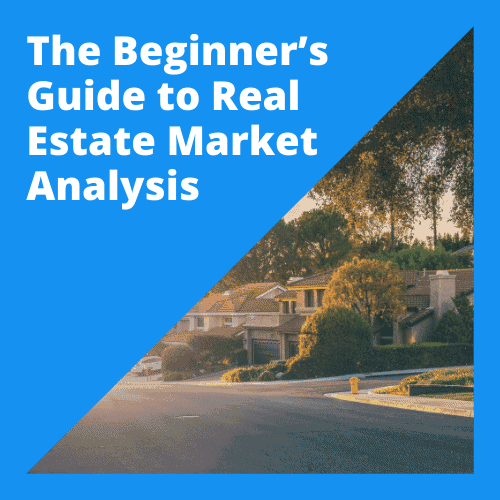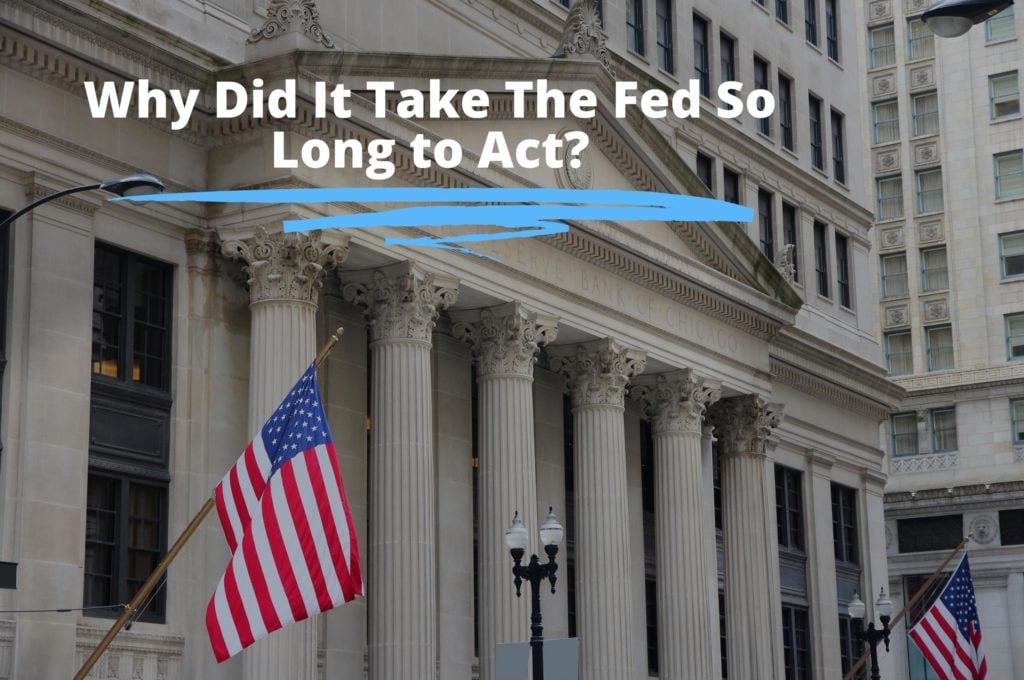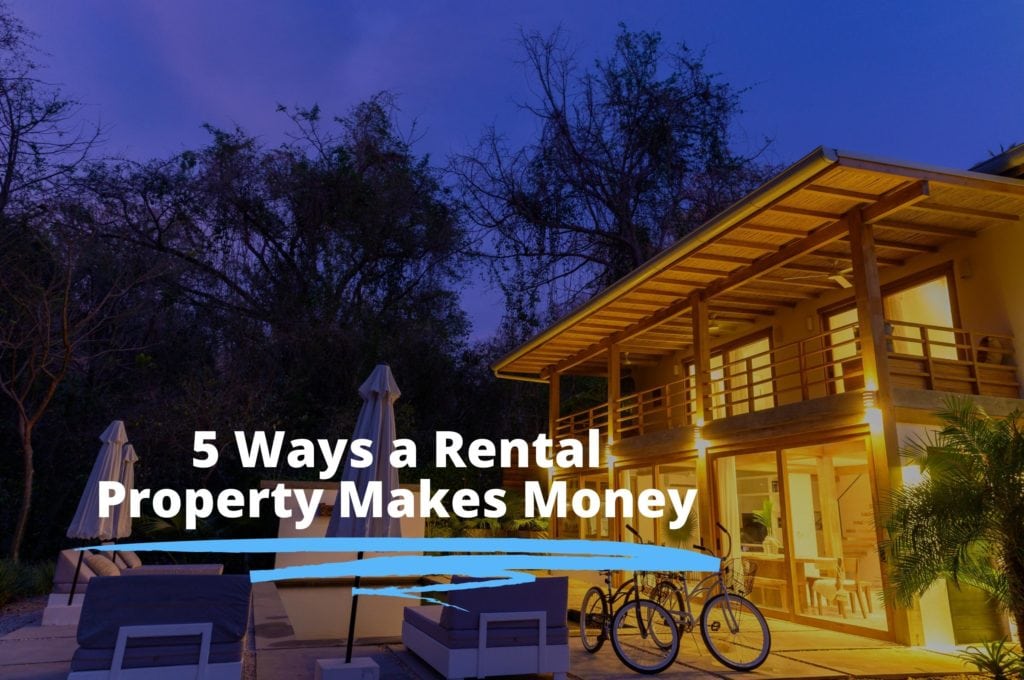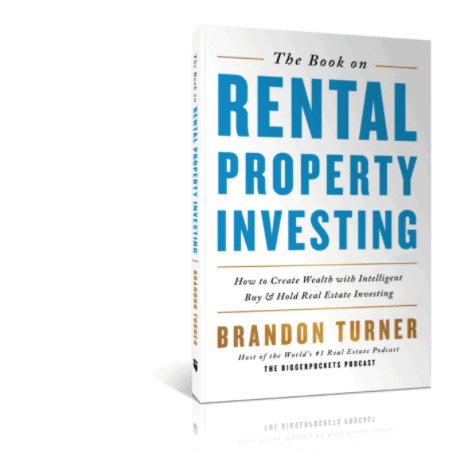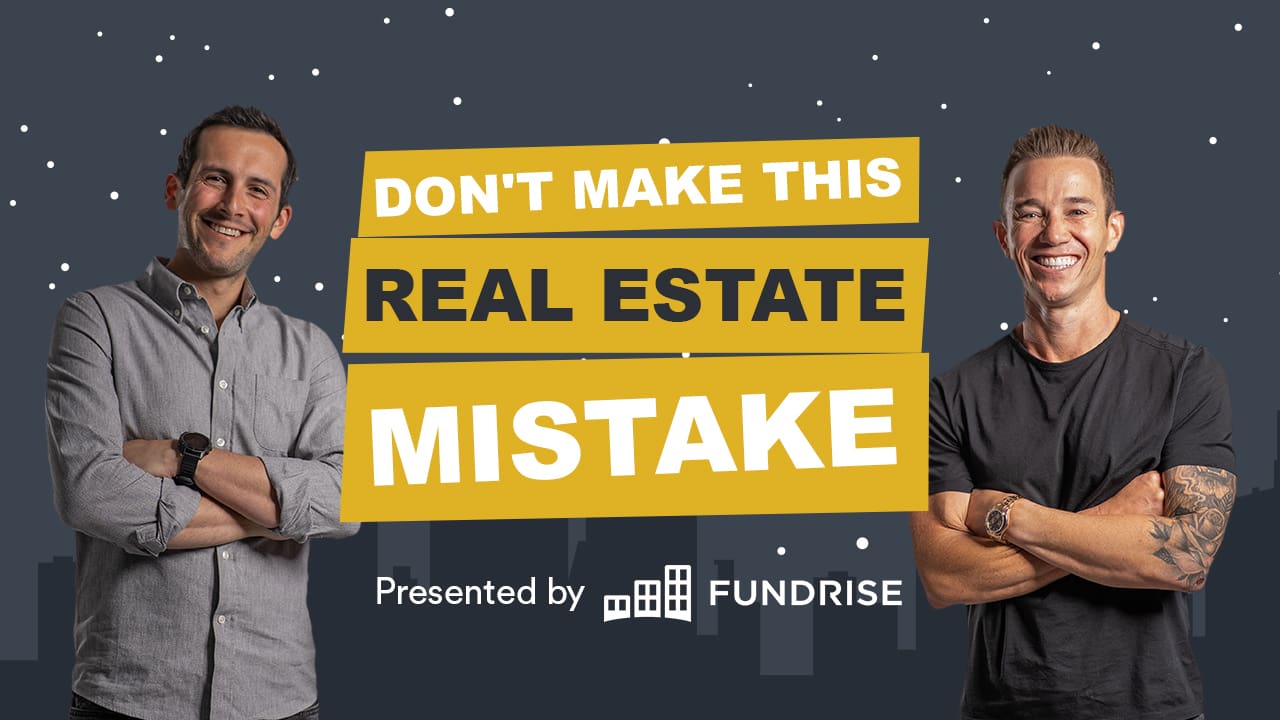David:
This is the BiggerPockets Podcast, show 626.
Zach:
I mean, there’s not a lot of difference. Whether you have a $200,000 single family in the Midwest, a $2 million deal in a more expensive neighborhood, you still evaluate the numbers the same. So don’t limit yourself looking at the larger deals and getting scared at participating in those, even if it requires bringing in some private money.
David:
What’s going on, everyone. I am David Greene, your host of the BiggerPockets Real Estate Podcast. Here today with my fantastic co-host, Rob Abasolo, where we get into an interview with the CEO of Rent To Retirement, Zach, was it Lemaster, or how did he say it? Zach Lemaster. You know what’s funny is when Brandon did these shows, he always messed up the last name, and now I, as the host, find myself doing the exact same thing. It’s funny, because when I was the cohost, I always knew what it was and as the host, I don’t.
Well, Zach gives us a great interview from several different dynamic perspectives of real estate investing. So Zach owns investment property himself all across the country, some of it small multi-family. We get in to talk about a luxury property that he actually bought in Colorado in a ski area that he’s going to be renting for $5,000 a night at peak season.
He also owns a turnkey company. You may have heard their name, Rent To Retirement. They are familiar in the BiggerPockets space. You probably heard his ads on our show. And we get into how he runs a company, how he hires, why he believes turnkey could be better for some people. Really good stuff. Rob, what was your favorite part of today’s show?
Rob:
I think it was really nice to hear his insight into turnkey properties. He really spoke a lot on stacking your strategy and staying hyper focused, because he’s had a very cool trajectory in his real estate journey. He went from being an optometrist to going into wholesaling, then to residential, then to commercial, and like you said, incredibly successful business owner as well. So just really fun to always dig into those stories a little bit deeper.
David:
Absolutely. Before we bring in Zach, let’s get to today’s quick tip. Today’s show, we talk about the W-2 mindset and how it doesn’t always fit into the world that we work in, which is an entrepreneurial space, what I call the 1099 environment where you don’t have clear paths drawn out for you for an employer to walk in. You’ve got this huge, immersive 3D environment. You can take any path you want and it can be very scary and unsettling when you bring a W-2 mindset into this world.
So ask yourself, in what ways are you operating in a W-2 mindset, ways that you may be and not know it? Is it a unseen expectation that other people should be telling you what to do? The thought that when something goes wrong, somebody else should be having to fix it and not you? The belief that you shouldn’t have to do work after 5:00 PM, or that during the hours of 9:00 to 5:00, you need to be working all the time?
None of these are rules that are hard and fast, set in stone, they are habits that we’ve created because we’ve worked in a W-2 world for so long. And if that’s you, that’s okay. But if you’re trying to get into the world that Rob and I and Zach operate it on a daily basis, that could be holding you back. So find out somebody, sit down and talk about what ways you might be experiencing a W-2 mindset that’s holding you back. Rob, do you have anything you want to add on that topic?
Rob:
No. I think it’s always very helpful to talk to someone who’s actually made the leap and has struggled with just going full on in the self-employed. And I think one, funny enough, I always used to say that I was unemployed and then Tony Robinson, Rookie host was like, “No, man, you’re self-employed, be proud of it.” And I was like, “That’s right. I am.” So find someone, pick their brain and learn. That’s all you can really do.
David:
All right. Well, that sounds great, Rob. I’d say without anymore ado, we should get into our interview with Zach. Zach Lemaster, welcome to the BiggerPockets Podcast.
Zach:
David, Rob, thanks so much for having me. I’m excited to be here.
David:
Yeah, we’re glad to have you too. So let’s get started by asking you, what does your portfolio look like right now with real estate and business?
Zach:
Absolutely. This is an ever evolving scenario, but today what we’re looking at, we mainly have transitioned to owning a lot of commercial retail space. That’s the majority of our personal holding. So we have 30 commercial spaces or doors, I guess that’s spread out across seven doors. We have 29 residential units. Two of those are single family in Canada that we own. My wife’s Canadian. Majority are here in multiple states. We have a couple duplexes, one fourplex in that. We have one very unique, large short term rental and we have 18 build to rents. Those are all single family.
David:
Awesome. And then what about from the business side?
Zach:
Yeah, on the business side, so what we’re doing is our core business Rent To Retirement, we’re a turnkey provider. And so we work in multiple markets throughout the US, mainly in Midwest and Southeast. We probably do about 50 houses a month. These are mainly single family or small multi where they are rehabbed, leased, and managed for our investor clients. And so that’s really our core business.
David:
Sweet. So you’ve got your wealth in real estate. You make your money and business in real estate. You are like us, a real estate nerd. So how did you get started in this whole space?
Zach:
Yeah. I think real quick to your point, David, it’s interesting is we interview a lot of people that are really successful in real estate and other businesses. There’s so many people that make money outside of real estate and other avenues and put it into real estate. And there’s so many people that flip houses, but don’t hold houses. I always thought that was a very interesting thing.
But going back to our story, so I’ll try to keep this somewhat short for you. We have a background in healthcare, I guess. My wife and I are optometrists by education. We met in school in Oregon. I think I initially got interested in real estate investing, as many people did, reading just Robert Kiyosaki, Rich Dad Poor Dad. That really stuck with me just in the mindset. I continued to always educate myself about different aspects of real estate, although, it took many years to actually take our first step into investing.
So we went to school in Oregon. I was on a scholarship with the Air Force after professional school. So I went in as a Air Force captain for five years, practicing optometry there. That’s where we started investing in real estate. My first house was a house hack, duplex. Used a VA loan to purchase that, excellent loan. We kept that house as a rental for many years, continued to move out of that and scale up over time.
One thing I always tell people is every single year, since that first duplex, which is over 10 years at this point, we’ve bought more and more real estate every single year and that has really allowed us to scale our portfolio where we’re at today. That’s just an internal goal we’ve set, just with that scalability mindset.
One other thing we did early on was wholesaling. We started to explore. Wholesaling we thought was an interesting way to just basically use a side hustle to make money in real estate and was, I guess rather low risk, at least initially. As many people have done, I paid a large amount, $25,000 for a course, money I didn’t have at the time just coming out of school, and so we put it on a credit card. I was very nervous about that, couldn’t sleep, worried about losing the money. I brought in a partner that ended up paying 50% of that and helping us get started with wholesaling.
We grew our wholesaling business to the point where we were probably doing 15 properties a month, decided to keep some of those as rentals and scale that over time, and then decided to also manage those, which many mistakes were made there of course. We started to scale over time, investing in different states throughout the US.
And I think that’s really a pivotal moment for us because that opened up our eyes, when we found out that, hey, you can invest out of state following, it’s really the same process as you can locally. And it’s all about your team and systems in place. And that allowed us to really focus on growing our portfolio in areas that had the best returns.
Some of the first two properties we bought were turnkey properties from a turnkey provider. These were South Side, Chicago, D class assets, numbers looked great on paper, high end rehab. And so it looked all good on the initial investment and they just performed terribly.
And actually the provider we bought them from, who also managed the properties. He ended up dying a year later, had a brain aneurysm. We were stuck with these properties. There was just nothing to do, no one to help us. But that was really the catalyst for us to start our turnkey business is, hey, we can go out there and do this on our own, and develop our own systems just through having to learn through those experiences.
So fast forward to where we’re at today, we’re investing in multiple markets throughout the US, scaling our portfolio and doing a lot of transition into the commercial space. We own a lot of commercial retail and that’s an area that we’re focusing on allowing us to scale up quicker, do the tax advantage benefits of cost aggregation studies on those. So that’s where we’re at today.
Rob:
So I want to jump back just a hair here, and I wanted to ask you … Oh, well, I mean, you mentioned you spent $25,000 on a course and you split it with a partner. A lot of people do this. My question to you is when you’re getting started, do you feel like the success that you had, the boost that you had from this course, did it come from the fact that you just spent money on it and you said, I am financially committed to this thing now, so I’m going to do it, or did the success come from the knowledge that you got from it? I’m always curious to hear, because I think it’s 50-50 for a lot of people.
Zach:
Rob, you hit the nail on the head, it was a hundred percent the financial commitment. It’s like, oh crap, I better do something because I just dropped this amount of money that I don’t actually have. Sure, the course had some educational stuff. You had a little bit of coaching. They reviewed some contracts with us. The reality is all that stuff was available online for free or just networking with the right people. But it’s definitely the financial motivation behind it. I don’t think that’s necessary, but definitely it’s going to light a fire under you to make sure that you do something in that scenario. That’s what happened to us.
Rob:
For sure. And so when you were first getting started, just so I understand the timeline, I know you said you were into the optometry industry, was that what really fueled your, I don’t know, the initial capital to get into this? Or how did that work out when you were first getting started? Or were you using the money from wholesaling to really fund the purchase of all your residential properties?
Zach:
Yeah, it was a combination. I mean, we were also in debt. We had six figure student debt, so that was a little bit of a burden, of course. Having the VA loan allowed us to purchase that first property with no money down. That was an excellent loan structure. But actually wholesaling rather quickly became the main method to fund a lot of the rentals that we were holding.
Wholesaling was key for us because it allowed us to evaluate deals, learn how to find and evaluate deals. And that I guess was crucial in allowing us to evaluate how to take on deals that we were going to buy and hold. But that was a great side hustle, I guess, that allowed us to build capital much quicker than we would just in our typical profession.
Rob:
Are you still in that? I guess it’s a little bit more of a front hustle at this point, but are you still in that world or did you move on once you built your backlog of capital and everything like that?
Zach:
You mean in the healthcare setting?
Rob:
No, no, in the wholesaling setting. Do you still execute that side of it at all? Or are you just now fully into the other niches that you discussed earlier?
Zach:
Yeah. Wholesaling is always an exit strategy that’s a potential. If there’s a deal that we’re not going to take on, we’re going to sell it to another rehabber. So, I mean, that is something we’ve definitely done, but it’s not the core business. Really, now, we buy a lot from wholesalers to actually take on, that we’re going to add to our own portfolio. So it’s something that’s not a main focus, but definitely I think it’s just an exit strategy to be aware of.
Rob:
Totally. Yeah. I guess it’s very rare that we have someone in your position here where you do have a really great business and you also have an amazing real estate empire. So just from a philosophical standpoint, I wanted to dig in a little bit on how you handle your investments and personal philosophy on how you’re funneling money from one side of the business to the other. And so what I was curious is do you take all the profits from your real estate side and just keep reinvesting that? Because it sounds like you’re always just growing your portfolio and buying more and more. Or is there a little bit of reward that you actually take from your real estate portfolio? Or do you live solely based off of business income?
Zach:
I mean, we don’t live huge, lavish lifestyles by any means. It doesn’t take much to replace the income that we have today. But I mean, when we started to earn significant income through our business, the tax burden was painfully real, and so a lot of our strategy now is to reinvest that money and that’s following our philosophy of how you should reinvest your proceeds. And so a lot of our active business we take and we put it into, at this point, now these commercial retail centers, run cost segregation studies on those to reduce our taxable income and just try to keep scaling that way. So I guess the answer, Rob, is just reinvesting it, absolutely.
Rob:
Yeah. This is something that I really find a lot of entrepreneurs and real estate investors struggling with, especially when they do have a business like you’re talking about and real estate and they just don’t know like, how do I pay myself? When do I pay myself? When is that appropriate? Because for me in my personal investment career, I’ve never actually spent any of the money that I’ve ever made in real estate. Not really anyway. I mean, not anything significant. I’ve always taken the profits that I’ve had and I’ve just dumped it back into the portfolio to just keep it growing.
And it’s really hard because obviously I feel like you do have to reward yourself every so often. But I’m in a similar scenario where I have another business outside of that and that’s where I’m … My income is mostly coming from that so that I can just protect the real estate nest egg that I’m slowly building over time.
Zach:
Absolutely. I love that.
David:
When it comes to what you really love about real estate, why you left your former profession to dive into this, what can you tell us? Was there a moment where you saw something that you hadn’t seen before? Was there an element of it you fell in love with? Was it a pure business decision? What got you into leaving your old job and going full steam into this one?
Zach:
I think probably the moment that we were just like, hey, we got to go full blown into this. This makes complete sense. It’s a simple fact that real estate, it’s not time associated. With working in the healthcare setting, you’re compensated based for your time in the chair, right? You can only see so many patients, you can only be compensated … Even owning businesses too, you’re wearing multiple hats. And a lot of healthcare professionals are not great business owners.
But just the ability to create income streams, where you are growing your net worth and providing consistent passive income, whether you’re actually working or not, I mean, once we saw the writing on the wall with that, David, that was very much like, hey, we got to go all in. We’ve seen a successful business model. We have a proven track record.
It was an emotional change though, too. There was a lot of people like, hey, you spent eight years of college going to school for this profession, what are you doing? So, I mean, there’s a little bit of that and it was an emotional change, but the best decision we made, absolutely.
David:
So this is probably a good point to ask you. We’ve talked about what we love about real estate, what are some of the challenges that you’ve encountered that you were not expecting when you first got into it or some of the things that stop you from growing at the pace that you wish you could?
Zach:
It’s an ever evolving world. You really need to stay up on legislation, on financing. I mean, financing is a huge thing. That’s been a big obstacle for us as we’ve grown our portfolio over time. One thing we always do is interview multiple different lenders to try to find the best financing options.
We hit a little bit of an obstacle with some of our commercial properties we purchased where they required … They gave us the best loan terms, but then they stuck us with all these loan covenants and requirements. They wanted a 10% liquidity requirement just sitting in the bank, just letting inflation eat that away. And they check that quarterly. So it’s just a little bit of a hindrance to be able to use that money to grow and scale. I mean, there’s all sorts of obstacles in real estate from all different capacities.
One thing that’s allowed us to be successful, I think is just being creative. And I also like that, that’s a challenge obviously with the obstacle, but being creative to find a solution to those problems, to be able to scale your portfolio, whether that’s a tenant, a financing issue, whatever the case is.
We’ve had some bad partnerships in real estate. I mean, that could be applied to business in general. We’ve lost a lot of money in partnerships that we jumped in too quickly and scaled too quickly with that unwound. But that’s just part of the game and staying out and trying to stay the course.
David:
Rob, as you hear this, what are you thinking about when you’re thinking about what your experience has been, and now we hear Zach’s doing this at a pretty big scale? What kind of thoughts are going through your head as far as the challenges that you’ve had as they compare to Zach’s?
Rob:
Well, Zach, obviously, you’ve scaled up and there’s a really big difference between running a 20 unit portfolio and a 100 or 200 or 300 unit portfolio. It’s a very interesting challenge. I think the scaling is something that a lot of people are … They have a lot of trouble because everybody has a very different idea of what scaling looks like and how to successfully execute it.
And so now that I’ve been doing this and scaling and growing my team and making this work for me, I’m starting to understand, and I don’t say this in a negative way, but it feels like I’m leaving the golden days of when I was learning everything and cutting my teeth and I could still make mistakes and I could still fail really big.
And now I’m really having to hold myself accountable and be like, okay play time’s over, we experimented. It was the wild west for the first five years of my career, but now there are a lot of things that I have to take in consideration and there are jobs on the line and I pay people, I pay employees. And so for me, I’m just in the throes of scaling.
But I know that even five years from now, I’m going to say that right now is the golden days, because I feel like this is going to be the most important period of my life is figuring out how to scale my business. And so yeah, I don’t know. I mean, I have a lot of respect for people that can grow a portfolio past 20 units, 20 doors, just because the team that it takes to do that is very difficult to build. It’s very difficult to find people who are on your page, on the same page as you, I guess.
David:
Yeah. So Zach, what’s your thoughts on that element of what you’re trying to build?
Zach:
Yeah, systems. I mean, systems and scalability is the hardest thing. I think it’s rather easy for a lot of people to scale their real estate business and portfolio to a few million with a handful of employees, but to really take it to that next level of growing your portfolio, where you have maybe 20 plus employees or you’re really making this a legitimate business, and really any business I think for that matter, scalability is tough and dealing with real big issues with employees. I mean, that’s a hard thing, I think we all are consistently facing.
And I haven’t figured that out yet, but every step we take on scalability, you try something out, if it doesn’t work, you try to implement a better system to do that and continue to add the right people to your team. That’s what it’s all about. I mean, we’ve heard the term or the saying of hire slowly and fire quickly. Sometimes we’ve done the opposite. But the right people are really what it’s about, creating those systems.
David:
So another challenge that investors face is where they live can have a geographical hindrance on their investing. So if you live in a great market, you don’t really think about this, if there’s opportunities to buy properties, if you’ve got cash flowing properties that are where you are. But if you’re in a market that’s not so great, you’re painfully aware that this whole investing thing sucks.
So you’ve had to learn how to buy properties in different parts of the country, that’s out of state investing. I mean, you’re actually in other countries with some of the stuff. What are some of the challenges that you encountered when it came to long distance investing and how did you overcome those?
Zach:
Yeah, I think the challenges of real estate really, there’s some challenges that don’t matter geographically because you’re going to have the same issues and then there’s some that are obviously. There’s this comfort, this mindset associated with, hey, if a property’s close by, I can solve this problem, which could be true to some extent, but it can also maybe take up too much of your time.
The reality is if you have the right people and teams and systems in place, it should follow the same process regardless of where you’re at. But investing out of state, I mean, finding good contractors, how do you build that team, whether it’s locally or in different areas? Obviously there’s different state legislation you need to be aware of and tax structures.
It’s like, what are the tenant laws and how do we know that we’re abiding by those? Can we vet tenants the same way that we do in this area? How does the eviction process work? There’s a lot of things to look at as far as managing the properties long term.
Internationally, I mean, constantly. And we have family that owns a property in Australia and many other countries as well. I always love to compare the US to those countries as far as a lending and tax structure, because there’s nothing else that comes close. I mean, there’s no such thing as a 30 year fixed loan in Canada or any other country. Australia does negative gearing where they actually buy negatively cash flowing properties to offset taxes. So that’s a constant reminder that the US has so much benefit to invest in. That’s why we have so much international money coming.
But as far as the challenges, I think they’re all really the same, David. I think you face the same challenges regardless of actual location and that’s why it’s vitally important to have the right people set up.
Rob:
Yeah. So I wanted to dive a little bit into it because I know you’re a big turnkey guy, right? And so I wanted to ask, what does that look like? What do you consider a turnkey property? Do you truly consider that when you’re investing in something that is in that category, a hundred percent done, locked down, ready to go, or do you still go into a potential turnkey property with any kind of renovation budget, whether it’s 3 or 4 or $5,000 just to get it up to your standard?
Zach:
Yeah. Turnkeys, I mean, we could go down many different rabbit holes with this, right? I think there’s a lot of people that have different opinions about turnkey versus doing syndications or something like this. I think in general turnkey, and obviously this is our business, but I think turnkey is an excellent option, if you’re working with the right people to allow you to scale, to allow you to have a little bit of hand holding starting out and allow you to diversify into different areas.
But it doesn’t make you immune to the same sort of challenges that you would have with real estate in general. When we look at turnkey, I mean what our definition is, is a house that’s newly built, because we actually participate in a lot of new construction. That’s about 50% of what we do at this point in time is build to rent.
But we want to see a house that has at least 8 to 10 years of life expectancy. So if your HVAC, your water heater, the roof needs replacing, then definitely those are your CapEx items, those are your biggest items to do that, and then of course lease and manage the property.
But we also, even though we sell turnkey products, we also buy turnkey. A lot of the commercial assets we buy, I would consider those even more so turnkey. Those are triple net leases, management pays our taxes, pays our insurance, pays our mortgage for us. Those are triple net leases often corporately guaranteed. So I mean, there’s a lot of different philosophies about what turnkey really is, but I think it’s really just going and having the right team in place to assist you in learning how to do that.
And I also think that turnkey is not the only option out there. We see so many people that are buying turnkey and this is the exact same thing with us too, Rob, is turnkey is a great way to invest in a certain area alongside what else you’re doing. If you’re doing your own flips, if you’re doing your own wholesaling, whatever the case is, it’s a great way to diversify into these different areas.
But as far as rehab budget, we have an expectation. We have different contracting teams in these different areas and they have a specific budget and line item, as far as what the expectation is. On management, we don’t do any internal management at this point, same sort of thing for property managers. We have a specific process we want the managers to follow as far as vetting tenants and how they’re actually managing the properties.
Rob:
David, are you buying any turnkey these days? Because I know obviously you’re the value add guy right here, Sir BRRRR, and I know that obviously that has been a very big component of your career. But obviously, I know that you’re a very busy and a very successful real estate entrepreneur. So as you grow in your business, I know that your time is more limited, does that mean that you’re typically looking for more turnkey stuff at this point? Or are you still in the value add space?
David:
I think that’s a really good question here. My heart is in the value add space, but depending on what I have going on at any given time, I’ve had to be humble enough to admit if I take on this project, one popped into mind right now, a property I have under contract in Savannah, Georgia that is in the historic district. It’s coming with short term rental permits. There’s a lot, I really liked about it, but in the inspection, it’s got some significant issues, like needs to be torn down to the studs at some point, needs a complete new roof.
And I was thinking, if I’m honest with myself, if I buy this thing right now, I am never going to manage that rehab. I’m not going to know what’s going on. I don’t have a person in place that I trust that could manage the rehab. That’s the wrong move for me, even though it’s got a ton of value add potential. I won’t be able to execute on that.
And I’m probably more geared towards when we say turnkey in the short term rental space is what I’m looking at. I need something that is coming furnished, doesn’t need a whole lot of work, out the box is good to go. And I recognize I’m not getting the built in equity I used to have, but I’m not going to be bleeding, trying to find how am I going to get furniture brought into this place, when we are having the supply chain shortages.
And how am I going to get a contractor in one of these really hot markets where it’s very difficult to find them? It’s going to be 90 to 120 days before someone even starts the project. And then I got to sit in the permit line that’s going to be really long because everybody else is doing the same thing.
So it is a balancing act that you’re constantly having to go through. And at times the turnkey option is definitely better for me, but there could be a moment where everything’s running great with the businesses, I’ve got good hires in place, people are doing good, and I’m going to be like, hey, this is the opportunity to go take on a bigger project.
Zach:
David, I think that’s a crucial point, just being realistic with what your capacity is right at this point in time. And if your time is limited based on other things that you’re doing than your business or building your portfolio, I think a lot of people are looking for … They may get distracted with … If you don’t have the time to dedicate to a deal, then you’re not going to perform on it, to the best of your ability. And so it’s just being realistic with what you bring to the table and what your time capacity is and what fits your goals at this point in time.
David:
Yeah. And that’s an important thing to acknowledge in real estate in general, because there is a temptation … I need to come up with a name for it. This is where I missed Brandon Turner because he was so good at coming up with clever names for things.
But it’s this idea that there’s a part of human nature that wants to ask the question of what am I supposed to do, just give me the blueprint and I’ll just go do it, as if life works that way, as if there’s just a path that everybody can walk, and that isn’t the way that this goes. There are many paths, and depending on your skill set, your time, your goals, they’re all going to be different. And part of, I believe at least, part of being good at real estate is knowing yourself well enough to know what type of properties that you should be getting into and where your time is better spent.
I think that’s one of the reasons that I went out and I built businesses and built teams instead of just focusing on buying a whole bunch of smaller properties is I had a skill set where I like leading people and I’m a visionary, whereas somebody else, that’s not what they’re good at. They’re really good at bookkeeping, and so they just need to be running syndications and buying multi-family properties.
And it’s both frustrating when you’re new trying to figure it out, but it’s beautiful when you’re experienced because all of a sudden the tree explodes into branches and you have all of these different ways that you can walk in that makes your job more fun.
And I know Zach, one of the things that you believe in is this concept of strategy stacking. It’s, hey, you’re good at this asset class, what’s the next asset class that you can bring in that will complement what you already got going on. Can you share what that strategy is and how you’ve worked it into your business?
Zach:
Yeah, absolutely. And I think so many people, especially starting out, David, they get the shiny object syndrome, right? And it’s like, oh, I want to do this, I want to do this. And that’s a beautiful thing about real estate, there’s so many different ways that you can make money investing in real estate and be successful, but you can’t start with all of them at once.
And so you need to stay hyper focused on what makes sense for you and then just understand that as you continue your journey, real estate investing is a lifelong journey, that there’s going to be multiple different ways that you can learn about and participate in. That’s exactly how our business and our personal investing has grown over time.
We bought our first duplex and the next year decided to buy two more duplexes and continued to scale over time. We tried wholesaling. That was a lot more work than we initially anticipated, but that allowed us to learn how to evaluate deals. Guess what? We wanted to decide to keep some of those deals, because we really liked the idea of long term holding. Then we started to build this business and be successful with that, investing in different areas.
Started to make more money. What do we do with that money? We got to put it back into real estate. We didn’t want to own 500 single family houses. I think I heard you refer to your portfolios, like herding cats at some point in time and that’s very much the case. I love single family, but only to a certain degree. And so we needed a place to scale quicker and larger deals takes those tax benefits.
There’s all sorts of different strategies to invest in real estate. And that’s the beautiful thing is you can be successful in multiple at once, but you got to stay hyper focused with one strategy at that particular point in time. Learn it, succeed at it, and grow over time.
Rob:
Yeah. So when you’re entering a new strategy, I guess, because it seems like … So looking at your portfolio, you did wholesaling, residential, now a little bit of commercial, you’ve succeeded at it. Is it a matter of, oh, I feel like I’ve succeeded at this, time to try something new? Or do you think of it as more like, I need to master this strategy before I move on? What’s your mindset there?
Zach:
Yeah. I wish I could tell you that I have this clear action plan, Rob, but it’s more or less learning about a new strategy, being intrigued by it, because if you’re interested, if you’re passionate about it and you’re interested in a strategy, then you’re obviously going to migrate towards that more and want to learn about that and take it on.
I’ve always been attracted to the idea of commercial in general, just because it’s longer term leases. Now there’s a lot of risk and volatility with that as well, make no mistake about that aspect of it. Single family and residential I think is just your bread and butter, solid way to build wealth, at least initially. But that’s been something I’ve always been interested in, just to be really passive and have these long term leases in place. So we decided we wanted to invest in commercial, well, probably five to six years before we even bought our first one, but it was just talking with the right people, learning about that.
But the next and when we hear about different strategies, and this applies to the tax side too, when we learned about cost segregations and investing in opportunity zones and things like this, my mind was blowing because I was like, there’s really ways to completely reduce your taxable liability, if you’re in and invest in real estate doing the same things we were already doing. We love real estate for all these reasons. So it’s learning about it and just continuing down that path until the next thing comes up.
David:
So what are some practical examples that you can think of where the average listener can sort of … Let’s say somebody starts on the small multi-family path. I think that’s probably the most common way everyone gets started. Rob, you were part of the Pokemon generation. So was Pikachu the first Pokemon everybody gets?
Rob:
No, you usually choose between Bulbasaur, Charmander, or Squirtle.
David:
Okay. So real estate’s just like, it’s the same thing. You’ve got the small multi-family road, maybe that’s Bulbasaur. Then you’ve got the single family house hacking road, that’s Squirtle. And I don’t remember what the other one you said was, but there’s another route that-
Rob:
Charmander.
David:
Charmander, right? Maybe that’s going to be like just buying single family homes in cash flowing areas, like Kansas City, lower price point areas. So there’s typically those three passives people start on, you’re going to house hack, you get into single family or small multi-family.
Small multi-family is probably the most common way that people get started. You learn the fundamentals of real estate, the best. Zach, you mentioned you have a lot of duplexes, triplexes across the country. That’s not a coincidence.
So somebody gets 7, 8, 9 of these things and they start to experience what I call that herding cats feeling. It’s like in the cartoons where there’s a leak in the submarine and they stick their finger in it. And then another leak pops out and then they stick their finger in, another one they stick their toe. And then they got to let go of one finger to go plug in another one, and the water’s coming out from there.
And for me, it was like every single day, another little leak was popping up and none of them were going to sink the boat, but they were freaking annoying. And it wasn’t fun to be investing in real estate because I’m dealing with these very small problems of a leak going on, a sewage line breaking, an air conditioner going out, a tenant complaining about something.
And I just thought, I could sell 25 of these houses or replace it with one house 25 times as big or as good or an apartment or something and get the same benefits, but not the 25 different holes that I’m having to plug. So for me, that was my moment where I realized, all right, I need to get into a different asset class.
I guess what I’m getting at here is can you share some practical examples of what a listener who’s got seven or eight small multi-family properties that’s ready to get another stack added onto what they’re doing, some possible scenarios that would work for them?
Zach:
Yeah, absolutely. I think that’s really what a lot of people think about when they’re trying to achieve financial independence or significant passive income is how do I scale up into some of these larger type of deals? And there’s multiple things you need to do to position yourself to really be the most attractive investor.
Biggest thing is on the financing side. I think that’s why starting out with single family, small multi-family puts you … Not only does it give you the experience investing in real estate, but it also positions yourself in the best financing position. When a commercial type of lender, whether we’re talking commercial, retail, office, industrial, multi-family, when they’re evaluating you as a borrower, they’re going to look at your track record and your performance.
Most people are not jumping right into real estate, buying a 50 unit apartment complex. I think it’s a great way to scale up over time and also show the bank that, hey, I can be a successful investor buying and holding these properties and running them successfully. And that’s going to dramatically change the type of lending that you can accomplish. Having that experience gives you the confidence as well, to look at larger scale deals and just changing your mindset about that.
But I think financing is the biggest thing to really look at, make sure you’re having a successful portfolio. Other than that, I mean, there’s not a lot of difference whether you have a $200,000 single family in the Midwest, a $2 million deal in a more expensive neighborhood, you still evaluate the numbers the same. So don’t limit yourself looking at the larger deals and getting scared at participating in those, even if it requires bringing in some private money.
Practical examples though, I mean, running a business successfully with those smaller rentals, that’s huge, and also scaling your team over time. As I mentioned on the managerial side, your management … And David, did you have management on … I mean, you weren’t doing your own management, right? You had employed management? It was still this herding cats feeling, even though you had management?
David:
Yeah. Even with the managers that were in place, they still had come to me and they’re like, “What do you want to do with this? What do you want to do with that?” And it was, well, the bid that you got. I remember one of them, there was a sewage line that broke underneath one of the properties and they came back with a bid for $46,000 to fix it. And I remember thinking like … I mean, I wouldn’t let a house go to foreclosure, but that would make more sense than what they were wanting me to spend on this.
So I said, “All right, well, who did you talk to?” They gave me the name of the company. And I said, “Did you send anyone else out?” No. Would you like us to? I was like, “Oh.” I’ve told this … Here’s a side note. Property management companies go through staff so fast that you can tell someone, this is what I want, and they probably hired three people since the last time you spoke to them and that person has no idea what you had said to the first one. So you’re always reiterating these instructions.
And we sent somebody else out and he said, “Oh, I can fix this for $2,700.” They ran a scope through the line and figured out where the problem was, whereas, the initial bid was, they were just going to rip out the entire floor of the home to try to find where the leak was. And I just remember thinking I could have easily just replied yes, fix it, and threw $46,000 at a $2,700 problem, and that was with property managers. So my issue was more, I needed to hire a person that could manage your property managers, and I wasn’t able. That’s been a very difficult thing to find.
Zach:
So practical examples from that, and I agree with you a hundred percent is yes, knowing how to manage your managers. If you need to hire an asset manager at some point in time, it’s worth doing that because they will also allow you to be more successful and more passive.
But I mean, even in that scenario with your property managers, even if they took care of the issue, which clearly in your case, they didn’t because they just gave you the first, most expensive quote and left it at that, but even if they take care of everything and you’re just hearing about it, that’s just so much noise and it distracts your mindset from what’s actually …
And that could be a super successful property that sell and have huge appreciation in the future, but there’s so many of those issues that are distracting you from being able to focus on your business. So focusing on how to manage the manager, how to find and vet good managers, and how do you solve individual problems when they come up? Sometimes it takes getting on the phone and calling those contractors and being creative and finding the right people to actually solve those problems.
It’s the same type of issues, single family house, it’s just maybe a larger scale issue, but solving those problems is probably one of the best skill sets you can have in learning how to follow through with that.
Rob:
I’m curious, David, what was that job title? Was it property manager, property manager?
David:
Kind of.
Rob:
Or was it property manager, property manager?
David:
So that is another issue I run into in business where your staff is always asking for a title or a job description. There’s this like, I need to know what’s my title, what’s my job description. I was like, well, I’m hiring you to do all the stuff that I don’t want to do and there’s a lot of different things. So I don’t know that I could possibly come up with every possible thing that could come up. But can I just trust that if you have to send an email out through MailChimp, you could do that. Do I need to include that in your job description?
I don’t even think I called him an asset manager, because every time I put something out for that, I got people that wanted $200,000 a year. But basically what they had to do is sit in front of the email that all of the property managers would send the statements and their repair requests to and handle the emails that came in with some degree of common sense. And if you ran into a big problem, no, I need to go bring this in front of David and learn from what he did and fix it.
So I learned quickly that giving the title asset manager was not a good idea, because it was like, oh, well, I’m an asset manager for this huge corporation and they pay me 250,000 a year, so I’ll come work for you. And I’m like, no, this is only like three hours a week of work that I actually need done.
Rob:
Yeah. I sent out an email yesterday that was like eight roles. And I put in the email that each role would require like one to two hours a month. It wasn’t anything. It was to help the people in my program. I’m trying to like expand the capabilities of it. But I had a lot of people that reached out and they were like, “Oh, I want X amount and X amount.” I was like, “Oh, no, no, no. As per my email, it’s like two hours a week, maybe. It’s not a lot.” So I think that’s probably pretty common.
Zach:
Well, no one’s going to care as much as you care about your properties, and so how do you make that hire? How do you find someone that can make those executive decisions for your portfolio? It’s tough. But if you find a good property manager, which that’s a tough job, right? I mean, that’s a tough business. It’s really like you have mad owners and you have mad tenants and you’re just in the middle of it, but there are good ones out there that can usually, if you give them good direction, handle the majority of the issues.
David:
Yeah. I would say to the people listening, if they’re trying to figure out how do I get into the next step, I really believe, and Zach, I’m curious if you would support this, and you as well, Rob, a big hindrance to people being successful in our world, which I’m going to call the 1099 world because it’s just, you’re responsible for your own success here, is they bring a W-2 mindset into it.
They’re expecting structure and rigid rules and a 9:00 to 5:00 schedule and all these things that we’ve been conditioned to expect from grade school, into the workplace, to where it’s just like we almost have a moral system set up around you shouldn’t have to work past 5:00, or weekends you should have off. And if you’re asked to do something outside of that, it feels like you’re being taken advantage of, even if you sit in the office and do nothing for seven out of the eight hours you’re getting paid for, right?
So when somebody comes into our world with those expectations, it’s very difficult to adapt to some … You could have a problem at a short term rental. Let’s say that there’s a mouse running around inside there at 9:00 at night. And the tenant isn’t looking at it like, oh, I’m bothering the person, they’re, I want this mouse out of this house and you don’t want a bad review. So the right thing to do is to jump in and fix it.
If people could have that flexibility with understanding that you are getting paid to solve problems and they could pop up at any given time, but there’s benefits to this as well. I personally think we would have more people in our space that were able to get more involved in what the three of us are doing and therefore, they would learn. Zach, do you take a similar opinion to that?
Zach:
Well, that’s the hardest thing, David, is finding staff that has that mindset. I mean, the entrepreneurial mindset, there is no 9:00 to 5:00, there is no on, off. And that’s a hard thing too. I think that we can probably all attest with this. I mean, sometimes you need to turn off your own mind and focus with your family when you’re at home. That’s a hard thing to do and I’ve struggled with that. It’s like my wife constantly reminds me.
But to find someone that has that same sort of mindset, I don’t know how to do it. I mean, it’s the biggest challenge is finding good people. And if you have someone that has that entrepreneurial mindset and to keep them, I don’t know, they would likely want to be some sort of partner to some degree at some point. How are you going to compensate them and keep them happy to stay? That’s a tough thing. What do you think, Rob?
Rob:
Yeah. This is hard, with the W-2 and the 1099 thing is we want all the good things of the W-2 world when we’re 1099, but none of the bad things. And so it’s like, we want our cake and we want to eat it too. And that this is something I deal with a lot. I’m a podcaster, a content creator, a real estate investor, there is no moment in which I’m not thinking about really those three things, other than if I try to turn off at 5:00 or 6:00. And my wife and I have an incredibly flexible life, and so do the kids, but it is not fun when I come home at 6:30 because she’s like, “Well, you can come home at 4:00, right?” And I’m like, “Well yeah, but if I don’t work, we don’t we don’t pay the bills,” kind of thing.
And it’s really similar even with hiring employees and everything, because I’m the entrepreneur, they’re not. And so the meeting of the minds there can be very difficult because I have to really make them understand, especially my assistant, who she’s my property manager and everything, and I have a lot of sympathy for her because she’ll be messaging Airbnb guests at 7:00 in the morning, 7:00 at night, midnight, 2:00, 3:00, but she might have downtime from 1:00 to 6:00 PM because there wasn’t a single peep on it. So it ebbs and flows.
And I think you’re right. I mean, I think you just have to prep people that it’s like, look, it’s cush when it’s cush and it’s not when it’s not. When it rains, it pours. You have to really understand that with the real estate space, because it’s never a 9:00 to 5:00 thing. It’s a 9:00 to 9:00.
Zach:
But that’s what you’re building. That’s what you’re growing over time. You got to put in that work now. You got to be willing to do what no one else will right now to build that type of lifestyle and portfolio long term. So it’s just part of the game.
Rob:
Although, I will say that when I was living in an apartment and stuff broke all the time and I would put in my maintenance requests, they wouldn’t come fix it for two or three weeks. I wish I could do that, where things go wrong and I’m like, yeah, I’ll give it a couple weeks and then I’ll fix it. I am envious of that.
David:
All right. The next segment of our show is the deal deep dive. In this segment of the show, we are going to dive deep into one of our guest’s specific deals to see how it turned out, how they found it, and a bunch of other juicy details. Remember that you can do more deals yourself with the help of BiggerPockets tools and resources. So be sure to check those out. So question number one is what kind of deal is this?
Zach:
So the one we’re going to be talking about today is right up Rob’s alley. This is a luxury short term rental out in the mountains in Keystone, Colorado. We actually found it basically just through broker relationships. It was listed and poorly marketed and then just became a stagnant listing.
Rob:
Okay. And how much was the deal?
Zach:
So it was listed at 4.8 million and that was far over list price, far over market value. Of course, Zillow has it at 5.5. And I think that they were going off of that as their pricing structure. But no one, there had been zero activity on it, no bids, anything. And it was listed by a broker that wasn’t really, I think checked in and was maybe on the ski mountain more than they were answering their phone. So that’s what it was listed at.
David:
Okay. And then how did you end up negotiating it to get it in contract?
Zach:
So we looked at it. And we don’t have a lot of short term. I mean, we have limited short term space. And so this was really a big learning lesson for us is evaluating it, looking at areas for value add. So this is something we looked at as, hey, obviously we need this, the numbers to make sense, be positive cash flow. We evaluate all these deals, even if they don’t make sense on the surface, just to see what kind of opportunity there is there.
So what we did is we basically gave them an offer. We saw that this is a stagnant listing, no activity. And so we just put an offer in. Our initial offer was 3 million, and so that was significantly less than what they … And especially in today’s market. They told us, well, they didn’t even respond, that’s just insulting. And so that’s what we did. We threw it out at 3 million.
We heard back from them later, I think it was three months later, still no activity on it. And it’s a unique house too. It’s like 9,000 square foot, 8 bedroom, 11 bath, just a very large, unique house, I don’t think a lot of people wanted to take on either. And we ended up going under contract at 3.2 ultimately.
Rob:
Sounds very, very familiar to a deal that me and David just did. How did you fund it?
Zach:
So we actually used a second home loan for this property and this will be a good learning lesson, just on the financing side to look at what different financing options are out there. Because of the price point on it, we were told by probably 20 different lenders that no way can you do a second home loan with 90% loan to value, this is jumbo, this is above our underwriting criteria that we would allow for. And so most lenders were quoting, I think it was a 60 to 70% loan to value on it. They also didn’t know how to value the property. They’re like, well, why are you buying it below market value? What’s wrong with it?
So we actually ended up finding a good credit union locally that had done some financing for us commercially in the past. We got a second home loan with 10% down. They actually waived the mortgage insurance because there was no company that would provide mortgage insurance at that price point.
And the interest rates as well, we almost used an ARM product on that, just because interest rates were a little bit more volatile at this point in time. ARM products were still, I think we got a ARM quote at 3.75, but we ended up getting a long term fixed product at 4.25 on it.
That’s the interesting thing too, some of those larger loans, and on the commercial space, you can actually get a lower interest rate than … I mean, those interest rates have less volatility sometimes than your single family.
Rob:
When was this again, just so that I know?
Zach:
Yeah, so we just acquired this earlier this year.
Rob:
Okay. Yeah, because we just closed our 3.25 million house at, I think six and a half, or no, 6.25. So just a little bit over yours.
Zach:
Yeah, and that’s a tough thing. We were getting a lot of quotes at … So this was obviously a couple months ago, interest rates were definitely different than right now, but still, we’re still seeing some quotes on, again, ARM products below that 4% and it’s just, I think finding the right credit unions and banks to explore with.
David:
So what did you end up doing with this deal?
Zach:
So this is a short term rental. There’s not a huge value add as far as renovation, it was built in 2001. So it is dated and we’ll put some renovation into it over time, but really the opportunity with this one is the property manager, which was also the listing broker on it. So you can imagine how that property was run.
It’s large enough where it’s a wedding venue in the summer, as well as corporate space. So it actually has quite a bit of activity in the summer. But they kept the rental at, I think it’s $1,700 a night throughout the entire year. I mean, I think that’s probably rule 101 with short term rentals is having dynamic rents, especially in peak season. Ski season, that property is projected to rent out between 4 to $5,000 a night in peak season, and she was still renting it out at $1,700 a night.
Now, she kept it rented for 340 nights last year, but obviously there’s much more upside potential. So that’s our use of it is obviously going to keep the short term space, probably do a little bit of value add just in the renovations, but also increase that income significantly.
Rob:
Well, I guess we sort of talked about the outcome. Is there any other specific outcome that came out of that, or we’re still figuring out exactly where you’re going to net out, right?
Zach:
Yeah, this is a new deal for us, so we’ll look at it and see how it performs over time. We’re excited about it. If there’s a huge equity position, maybe we’ll do something with that, or look at 1031 in the future, but I don’t know. I mean, we’ll plan to use it of course maybe a couple times a year when it’s not rented out.
But we’re excited to see how the path goes and just on initial projections, I mean, they did … Just in using dynamic rents and not changing anything else about the property, we were able to increase the income by over 30% on it, and that’s huge.
And so that took it from being a property that didn’t cash flow at all, at 90% loan of value, we would’ve been losing quite a bit of money on that to actually being a positive cash flow, which has been hard to do.
We’ve been looking in this area for short term rentals for probably three or four years now and it’s always a scenario where it’s like, okay, we’ll buy it. If we’re not putting 30 to 40% down on it to make it cash flow, it’s not going to cash flow. We just could not find anything. So I think the ability of finding something at this price point, unique house, undervalued rents, we’re just excited to see how it performs over time. Have you guys out to ski in the winter.
Rob:
Oh yeah, count us in.
David:
So what lessons would you say you learned from the deal?
Zach:
I would say, well, we didn’t really talk about too much of the negotiation. I went straight to the point of what we actually ended up acquiring the property at. There was a lot of tactical conversations throughout the process of, oh, we have this person, we have some people, because they knew we were interested in it. We were the only people that viewed the house. Even though we gave them a low ball offer, it was, hey, we’re interested. We have some other people that are interested. They’re putting in these offers and countering us.
And we just stuck to our guns the whole time. We knew the number. This wasn’t an emotional buy. That’s the biggest thing I think in this one, David, this was not an emotional buy that you can easily get yourself into, I think especially in the Airbnb space, if you plan to use it. But we knew where our numbers were to make it make sense and we stuck to that the entire time and that allowed us to actually acquire it at the price that we needed it to.
It was a waiting game, but we just stuck to the numbers as well as exploring different financing options. That’s a huge thing. I encourage everyone to look at least 5 to 10 different lenders for every deal, even if you have a lender. I think we so often fall into this category of, hey, I want to use a lender that I’ve been using, because I feel loyal to them and I feel comfortable and it’s easy, I don’t have to turn in all my docs.
Well, lenders are not created equal and they’re quite dynamic as well. So if you have a good relationship with someone, absolutely explore that, but every deal is different and definitely be willing to look at different loan options out there. We had so many people that tell us that you cannot finance that, a 90% loan to value. We don’t have mortgage insurance on it and a lot of people said that’s just not possible. So those are the biggest takeaways. Also, just looking for value and sometimes that takes some time, especially in today’s market.
Rob:
Awesome. And lastly, who was the hero on your team for this deal?
Zach:
Ooh, is this a new question? I don’t know if I’ve heard this one before.
Rob:
It is. We’re throwing you a little curve ball, Zach. The old switcheroo.
Zach:
Well, my wife’s a hero. I have to give her the shout out because even though we … I got emotionally attached to … I was willing to pay more than we should have, but she was the one that really reigned us back in and said, “No, we’ll find something else. You don’t need this. Don’t stretch this to make it work just because you’ve been looking for three years for something like this. If it makes sense, it does, and if it doesn’t, we’ll find something else. It’s not a big deal.” And so I think really that is the biggest aspect of just keeping us focused, knowing the numbers and going through our criteria. And so definitely wife is a hero on this.
Rob:
They always are.
Zach:
Yeah. Yeah. She made me say that by the way, she knew that we were recording this.
Rob:
She’s standing on the other side of the camera like, you better say it.
Zach:
Yeah.
David:
All right. Well, that brings us up to the last segment of our show, it is the world famous, famous four. In this segment of the show, Rob and I will ask you the same four questions we ask every guest and we’re excited to hear what your answers would be. Question number one, what is your favorite real estate book?
Zach:
And I don’t have anything that hasn’t already been said. There’s been so many good books. A huge Kiyosaki fan, but probably for right now, The Millionaire Real Estate Investor, Gary Keller. That one’s just huge for me, and I try to read that once a year, section two, talking about the different stages of think, buy, own and receive a million. That’s huge, implementing systems. I mean, that’s just an outstanding book and encourage everyone to read it if they haven’t.
Rob:
Great. Great. Question number two, favorite business book.
Zach:
Business for us, I mean, this kind of goes to what we were talking earlier about the entrepreneurial mindset, so the E-Myth absolutely, or E-Myth Revisited on this one with Michael Gerber. This is definitely something that I try to read consistently as well to remind myself to focus on the business, not so much in the business. I think this is a crucial book for anyone running a business in any capacity and definitely something that is just how to build a team, focus on systems. It’s an essential book.
Rob:
Awesome. And when you’re not building a turnkey empire and a commercial empire, what are some of your hobbies?
Zach:
So as I mentioned to you before the show, we have a one year old, that’s our hobby right now. We’re loving that. We used to travel quite a bit. Right after we got married, we did a seven month honeymoon and visited like 30 countries, scuba dive a lot. We love to travel. We’re excited to get back into that once the kiddo’s old enough to do that. And then other than that, just enjoying nature out here in beautiful Colorado.
David:
In your opinion, what sets apart successful investors from those who give up, fail, or never get started?
Zach:
I think I’m going to say I’m going to use three terms because I believe that all of these are essential for people to be successful in real estate. First of all, they need focus. You got to stay focused on what path of investing you want to participate in. If you’re a new investor, don’t get the shiny object syndrome, choose a path and take action and follow it.
But the biggest thing over time, I think is just staying the course. Tenacity and creativity are the two other keywords. Real estate has a lot of obstacles and it’s not easy, right? This takes a lot of time. This takes work. This isn’t a get rich quick type of scenario and it’s challenging and frustrating, but as long as you can stay consistent to invest in this lifelong journey, generational journey, as you teach your children how to be a successful investor as well.
But you got to stay the course and be creative about solving problems. There’s always a solution, multiple solutions often, and put in the due diligence to find out what those are.
Rob:
Very wise words to live by, Zach. Lastly, can you tell us where people can find out more about you?
Zach:
Absolutely, our YouTube page. Although it’s a newer page, we’re trying to put out as much educational information about all things real estate. So our page is just Rent To Retirement, Rent, T-O, Retirement. They can go to our website as well. That’s renttoretirement.com, to learn more about our team, different things that we have going on. If they’re interested to learn about turnkey investing in any of the areas that we operate in. And that’s got links to all our social media accounts as well, so that’s a great place to start.
David:
Rob, how about you?
Rob:
Well, you can find me on YouTube as well on Robuilt. That’s R-O-B-U-I-L-T. And you can also find me on Instagram, @robuilt, and TikTok, @robuilto.
David:
All right. And if you like the interview that you heard today with Zach, go check out BiggerPockets’ YouTube page. We have a ton of stuff. I guess it’s called a channel, not a page. Tons of stuff on there, different interviews. I’m interviewing people. Rob’s got some stuff that’s on there. Lots of different BiggerPockets personalities that if you want to get deeper into this world, there’s plenty of content. And then be sure to check out biggerpockets.com/podcasts, where you can see the other podcasts that we’ve got for you to listen to on specific topics. If you want to follow me specifically, I am davidgreene24 on Instagram and everywhere else.
Zach, this has been fantastic. We really appreciate you being here with us and sharing your information. Is there any last words that you’d like to leave with our audience before we let you go?
Zach:
Go out and take action. It’s a crazy world right now, high inflation, interest rates are crazy, competitive markets. There’s still deals to be had and people are still being very successful in real estate. Don’t let that stop you. Educate yourself and take action. It’s been fun guys. Thank you so much.
David:
Awesome. We’ll let you get out of here. This is David Greene for Rob power-coif Abasolo signing off.
Help us reach new listeners on iTunes by leaving us a rating and review! It takes just 30 seconds and instructions can be found here. Thanks! We really appreciate it!




